October 6, 2025
Contributor: Supriyono | Photo: Kealyn Din Dalmi
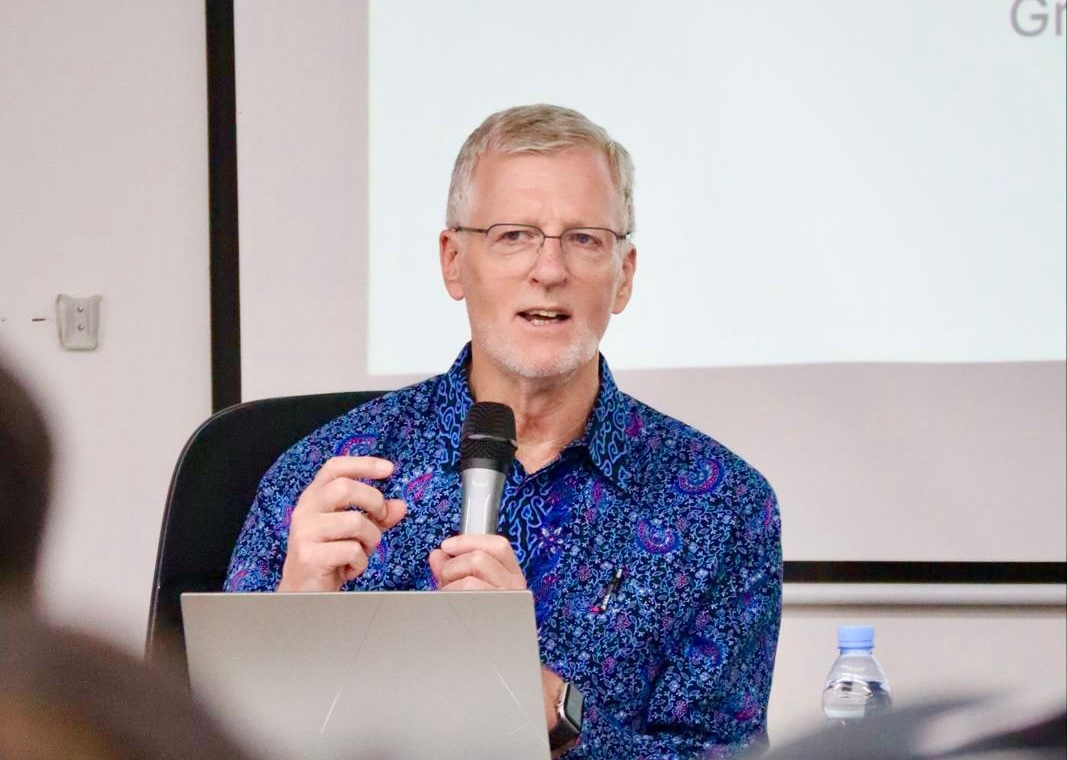
Depok, October 2, 2025 — The Center for Islam and Global Challenges (IGC), Faculty of Islamic Studies at Universitas Islam Internasional Indonesia (UIII), hosted a compelling public lecture by Prof. Greg Fealy, Senior Fellow at the Department of Political and Social Change, Australian National University (ANU). The lecture, titled “Rethinking the Religion of Java: Resurgent Mysticism and Santri-Abangan Relations,” revisited the intricate religious dynamics shaping Java’s spiritual landscape today.
Drawing from an extensive survey conducted by Prof. Fealy and his research team, the presentation offered new insights into how mysticism and santri-abangan relations continue to evolve amid Indonesia’s changing religious and political environment. The survey, which covered over 20,000 respondents across Central and East Java, stands as one of the largest studies ever undertaken on Javanese religiosity.
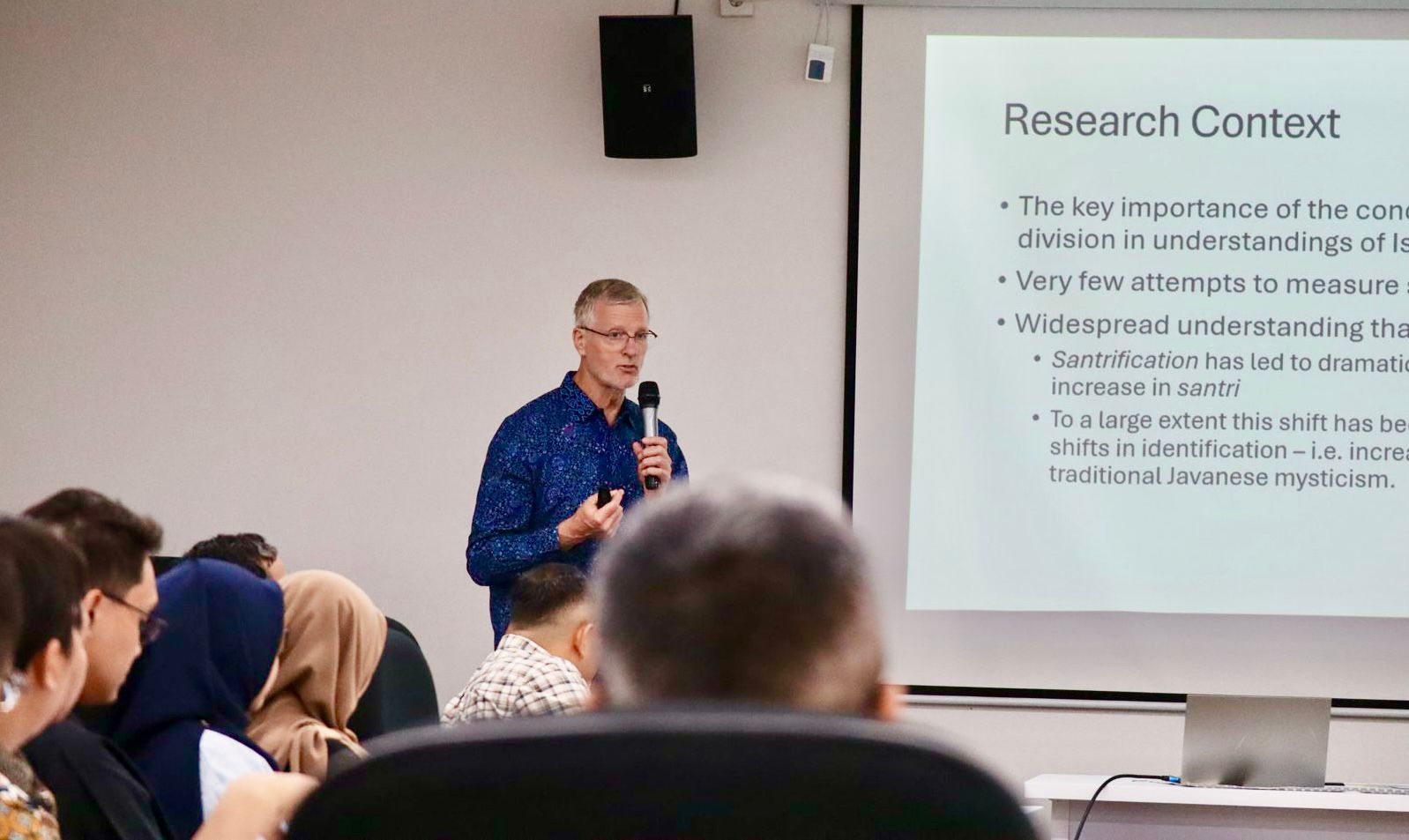 Prof. Fealy began by contextualizing his research within the longstanding academic discourse initiated by Clifford Geertz’s The Religion of Java (1950s), which categorized Javanese Muslims into three main groups: santri (orthodox Muslims), abangan (syncretic, mystical adherents), and priyayi (the bureaucratic elite). While acknowledging Geertz’s influential framework, Prof. Fealy emphasized that contemporary data suggest more fluid boundaries between these categories than previously assumed.
Prof. Fealy began by contextualizing his research within the longstanding academic discourse initiated by Clifford Geertz’s The Religion of Java (1950s), which categorized Javanese Muslims into three main groups: santri (orthodox Muslims), abangan (syncretic, mystical adherents), and priyayi (the bureaucratic elite). While acknowledging Geertz’s influential framework, Prof. Fealy emphasized that contemporary data suggest more fluid boundaries between these categories than previously assumed.
“Our findings show that the lines between santri and abangan identities are no longer as rigid as many scholars believed,” he explained. “Mystical practices remain strong in Central and East Java, and in some areas, we even see a revival of traditional spirituality.”
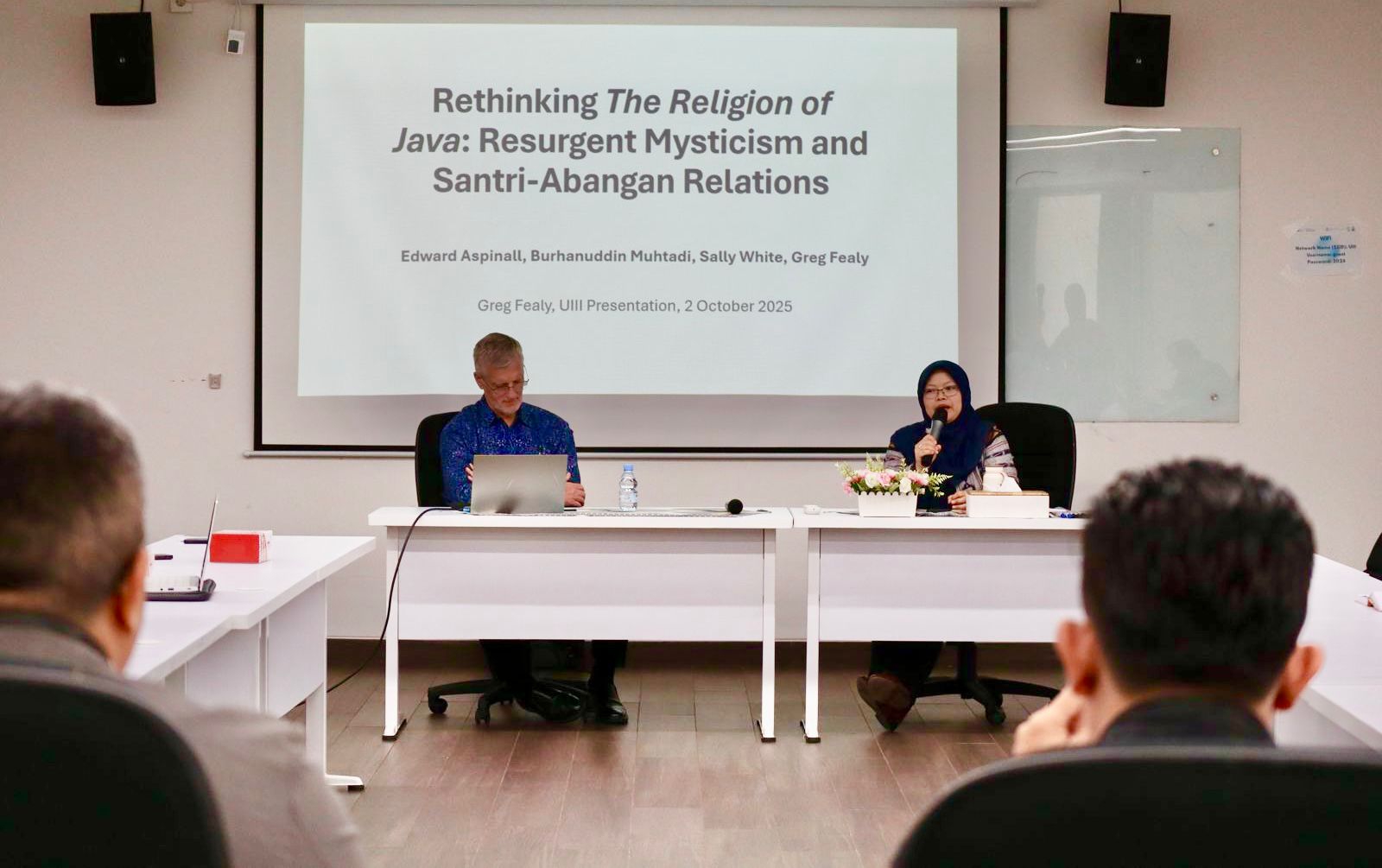 According to the survey, around 64 percent of respondents identified as santri, 16 percent as abangan, and a small fraction as priyayi, with the remainder undecided. Interestingly, while religious observance has generally increased, mystical beliefs and practices such as consulting spiritual texts, performing rituals, or venerating sacred sites persist among all groups, including modernist Muslims.
According to the survey, around 64 percent of respondents identified as santri, 16 percent as abangan, and a small fraction as priyayi, with the remainder undecided. Interestingly, while religious observance has generally increased, mystical beliefs and practices such as consulting spiritual texts, performing rituals, or venerating sacred sites persist among all groups, including modernist Muslims.
Prof. Fealy noted that this continuity of mysticism contradicts the long-held assumption that modernization and increased Islamic piety would diminish traditional spiritual practices. “Contrary to earlier predictions that mysticism was declining, our data suggest that it remains deeply rooted in Javanese culture—sometimes even blending with modernist or reformist expressions of Islam,” he remarked.
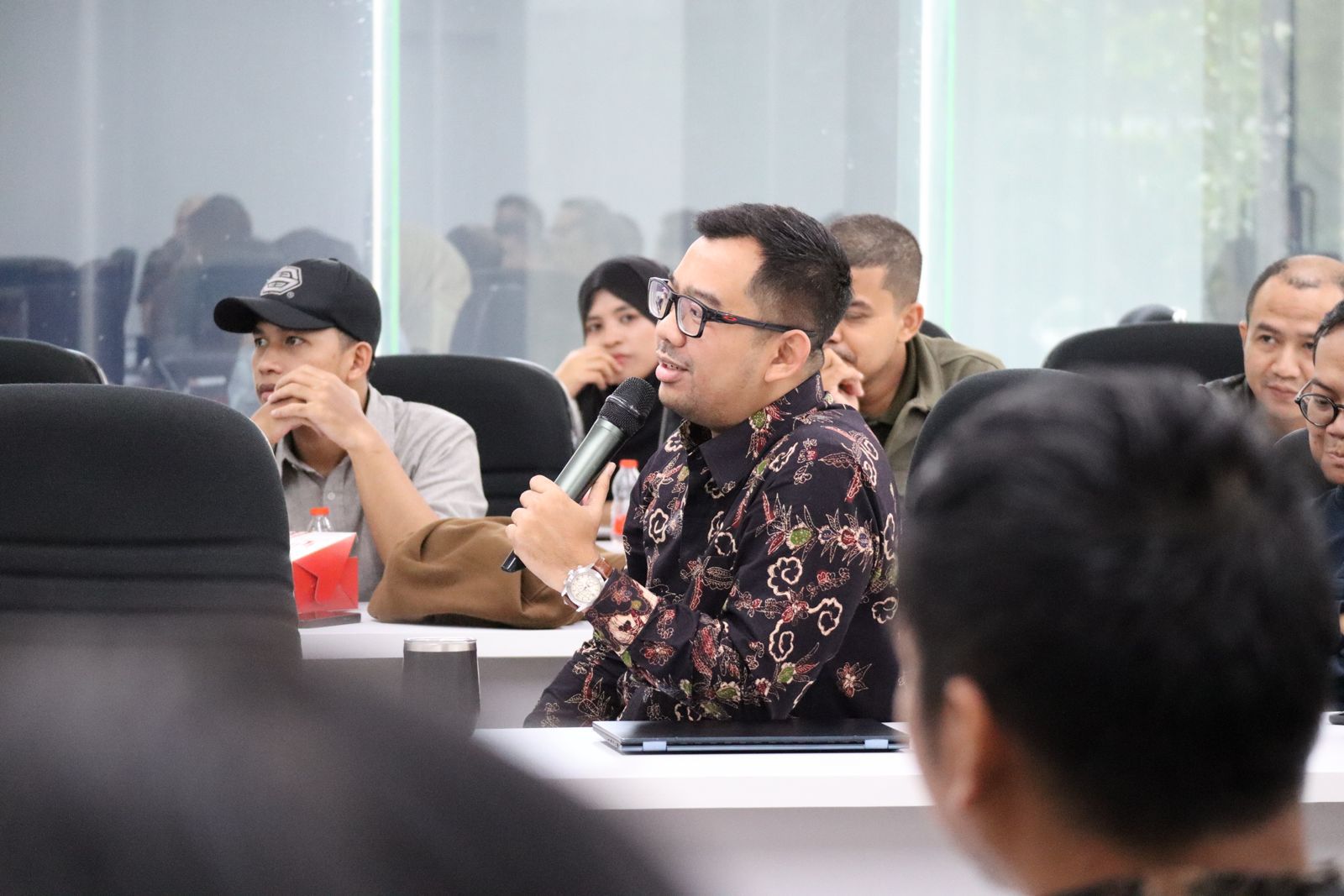 The survey also revealed regional variations: mystical practices were more concentrated in central and eastern parts of Java, while modernist orientations prevailed in urban centers. Despite these differences, Prof. Fealy observed an overarching trend toward what he described as a “new synthesis” between orthodoxy and mysticism.
The survey also revealed regional variations: mystical practices were more concentrated in central and eastern parts of Java, while modernist orientations prevailed in urban centers. Despite these differences, Prof. Fealy observed an overarching trend toward what he described as a “new synthesis” between orthodoxy and mysticism.
“This is not simply a story of Islamization erasing local traditions,” he said. “Instead, we are seeing a form of spiritual accommodation—a coexistence where santri religiosity and abangan mysticism increasingly overlap.”
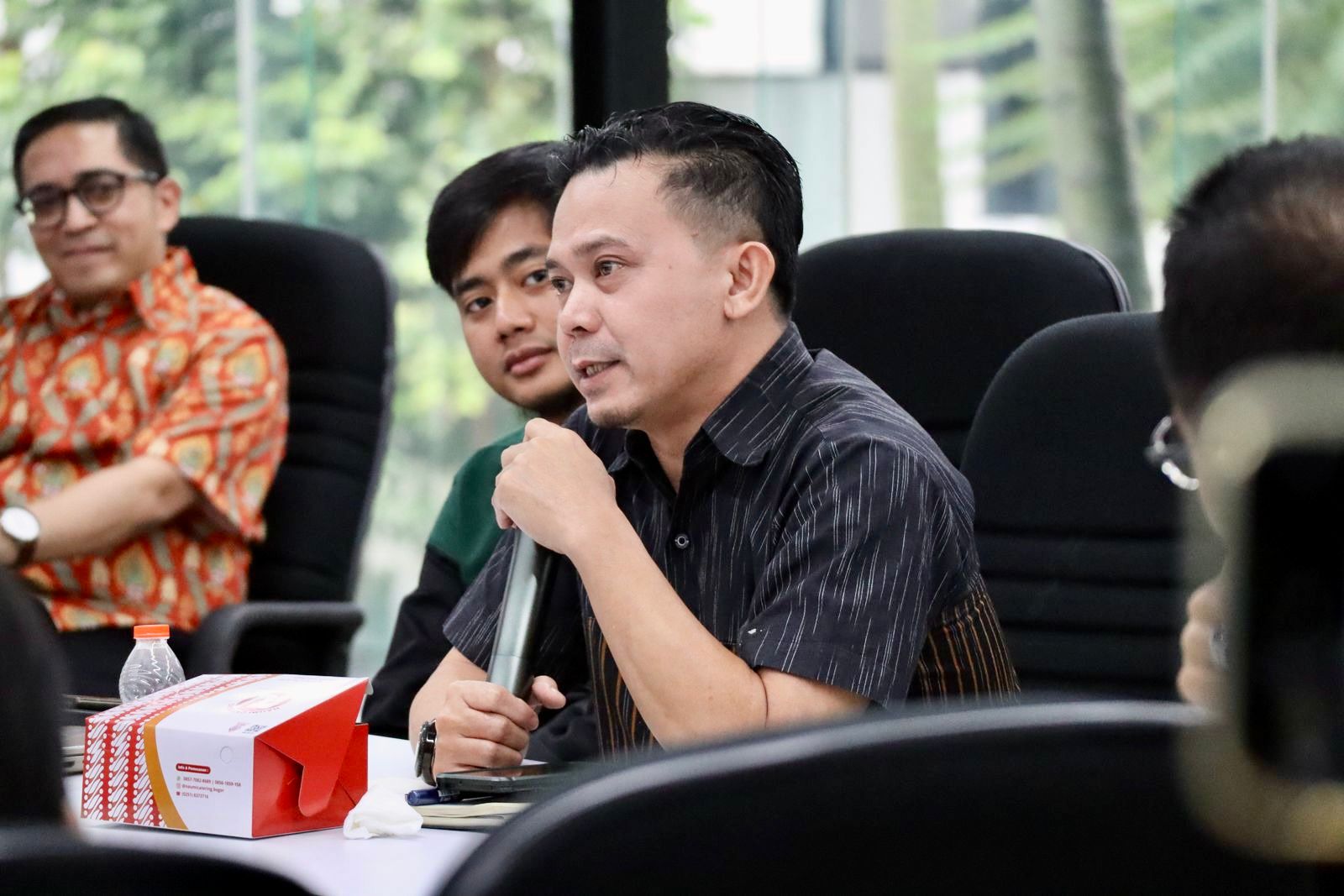 In discussing the political dimension, Prof. Fealy pointed out that religious orientation still plays a role in shaping electoral preferences, though less predictably than in the past. He argued that identity categories once considered politically polarized now interact in more complex ways, reflecting Indonesia’s evolving democratic landscape.
In discussing the political dimension, Prof. Fealy pointed out that religious orientation still plays a role in shaping electoral preferences, though less predictably than in the past. He argued that identity categories once considered politically polarized now interact in more complex ways, reflecting Indonesia’s evolving democratic landscape.
The lecture concluded with a reflection on the broader implications of these findings for understanding Indonesian Islam. Prof. Fealy suggested that the current wave of religious revivalism in Java may be less puritanical and more locally grounded than previous generations of reform movements.
“We may be witnessing a form of re-enchantment—a renewed interest in spirituality that is both Islamic and Javanese,” Prof. Fealy concluded. “Rather than disappearing, mysticism has found new ways to adapt and coexist within modern expressions of faith.”
The event reaffirmed UIII’s commitment to fostering critical discussions on the intersections of religion, culture, and society—particularly those that challenge conventional understandings of Islam in Indonesia.
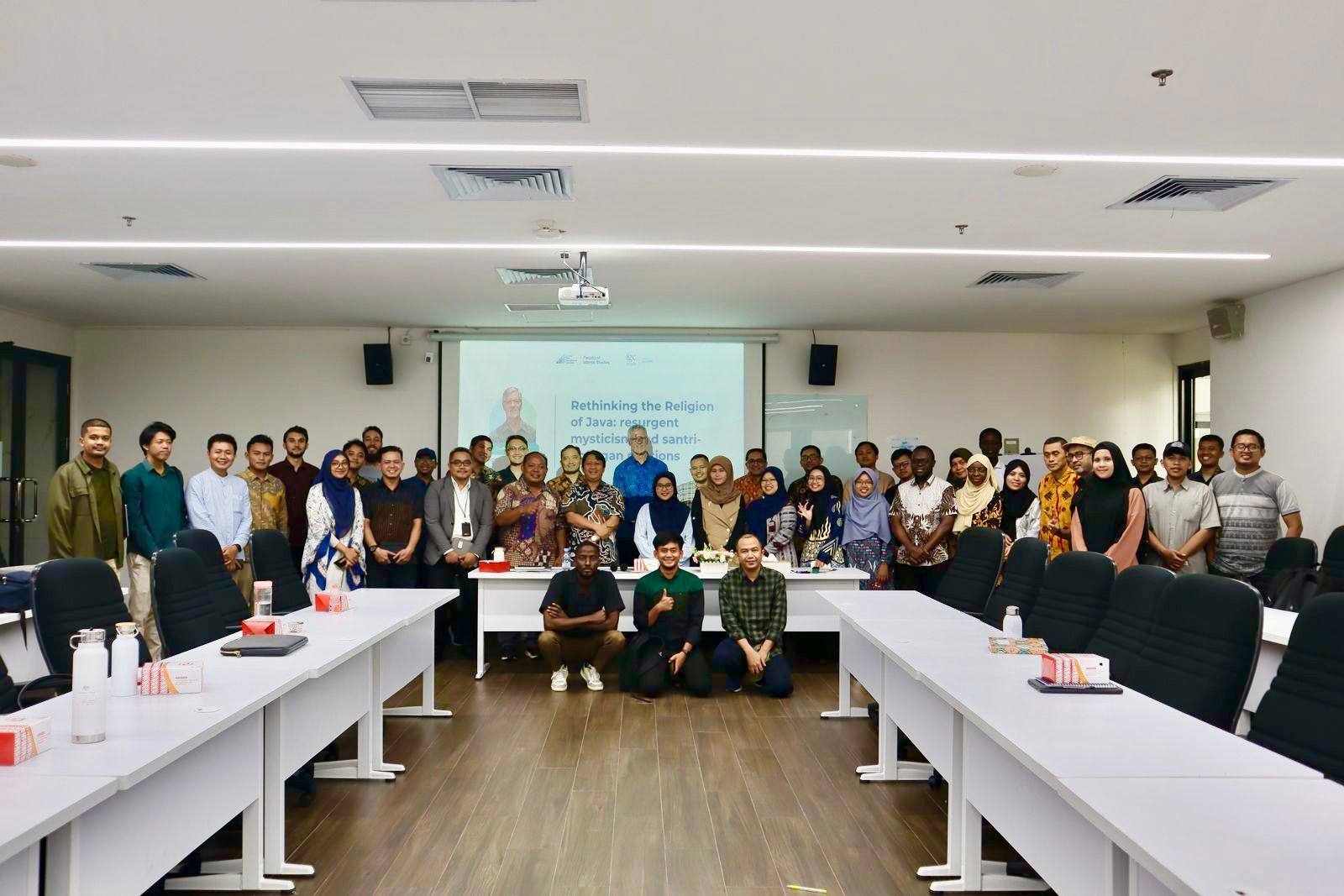
Universitas Islam Internasional Indonesia